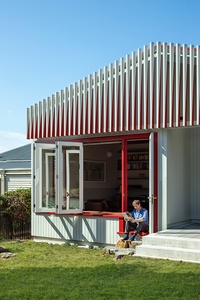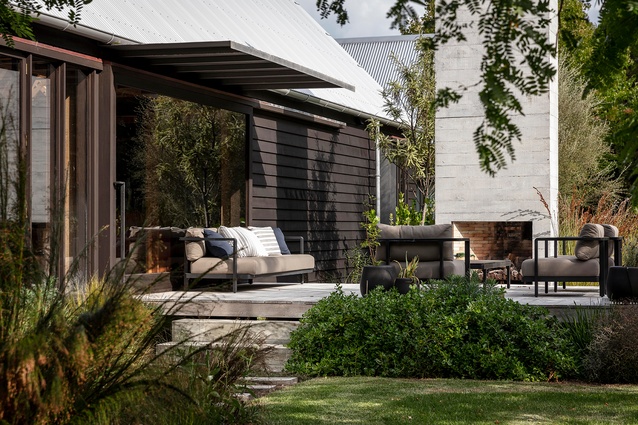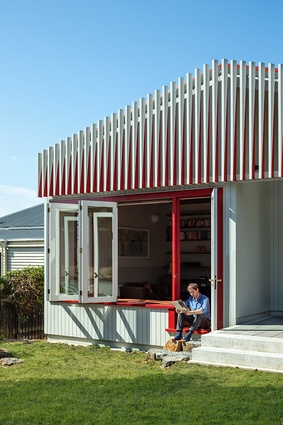Technology meets craft: Merging digital tools with traditional design in residential architecture
Sarosh Mulla, director of Pac Studio, delves into the tension between technology and craftsmanship in residential architecture to uncover parallels in these seemingly disparate modes of design.
In the world of residential architecture, a fascinating tension exists between cutting-edge technology and traditional craftsmanship. On one hand, we have digital tools like Virtual Reality (VR), 3D modeling, and carbon calculation, which have revolutionised the design process. On the other hand, there’s the undeniable richness and warmth that only handcrafted elements can bring to a home. In recent years, I’ve seen how blending these two approaches can create homes that are both innovative and deeply personal.
Take VR, for example. It’s completely transformed the way architects communicate ideas to clients. No longer do we have to rely solely on blueprints, models, or even renders — now, clients can step inside their future homes, exploring every nook and cranny before a single brick is laid. At my practice, we’ve found that this immersive experience is a game-changer. It allows clients to feel the space, understand the flow, and even see how light interacts with different materials. Decisions that once took weeks of back-and-forth can now be made instantly, with clients feeling confident in their choices. Recently, a client was able to walk through a virtual version of their coastal home and immediately understood that we could make the space feel more expansive by simply adapting the proportion of a window. Such insights are hard to grasp from a plan alone, but with VR, they become intuitive.

Yet, while technology has made the design process more efficient and interactive, it hasn’t diminished the importance of craftsmanship. In fact, I’d argue that it has made the role of the artisan even more critical. In a world where almost anything can be 3D printed or prefabricated, the handcrafted details of a home stand out more than ever. Recently, we worked on a home where custom timber cabinetry became the focal point of the interior design. While the client loved the sleek lines and modern feel of the space, it was the hand-formed detailing on the cabinetry that truly brought warmth and character to the home. The precision of digital design made it easier to plan these elements, but it was the skill of the craftsperson that brought them to life.
This is where the magic happens — at the intersection of new and old, between technology and tradition. It’s not about choosing one over the other but finding ways to blend them seamlessly. In another project, we used parametric design software to create a unique shading structure for a home. The software allowed us to optimise the shape based on sunlight patterns throughout the year, but we then handed the design over to a local carpenter who hand-fabricated each element. The result was a modern, functional feature with the tactile, artisanal quality.
What’s interesting is how these tools also allow clients to be more involved in the design process. I’ve found that people increasingly want a hand in shaping their spaces, and digital tools are helping bridge the gap between client vision and architectural expertise. For instance, one client was particularly concerned with how the home’s materials would age, as part of their desire for a residence that evolved with the land over time. We used VR and material simulations to show them how different timbers and finishes would weather in the harsh coastal climate, helping them make an informed decision. This kind of collaboration makes the final result feel even more personal because clients see their input reflected in the tangible details of their home.
But it’s not just about client satisfaction—it’s also about responding to larger societal shifts. Sustainability is one of the most pressing concerns for today’s clients, especially those looking to reduce their environmental footprint without sacrificing quality or style. Carbon calculation tools have been invaluable here, helping us design homes with lower environmental impacts by choosing the right materials and methods. But again, this is where craftsmanship plays a vital role. Sourcing local materials and working with passionate suppliers and fabricators who understand how to use them not only reduces carbon emissions but also creates a stronger connection to place.

In many ways, this approach speaks to the broader societal shifts we are seeing in architecture today. As mass production and rapid urbanization change the way we live, there is a growing desire for homes that are not just designed but crafted — homes that have a soul. Here in Aotearoa, this desire is especially poignant. We live in a place where the landscape is dramatic and the culture rich, and our homes should reflect that. At a time when AI and 3D printing are starting to take over many aspects of design and construction, the human touch becomes even more valuable. I’m reminded of a recent conversation I had with a client who marveled at how a hand-laid stone fireplace in their home felt like an anchor in a space that was otherwise defined by modern lines and innovative technologies. It’s moments like these that remind me why we can’t let go of tradition, even as we embrace the future.
Looking forward, I see the relationship between technology and craft only becoming more intertwined. AI-driven design tools will undoubtedly allow us to push the boundaries of what’s possible, and 3D printing could enable us to create more bespoke elements at a faster pace. But even in this high-tech future, the role of the artisan — the hands-on expertise of the craftsperson— will remain indispensable. As architects, the challenge will be to continue blending these elements in a way that respects both the precision of technology and the soulful details that only a human touch can provide.
In the end, residential architecture is about creating homes that reflect the people who live in them. By merging the best of both worlds — cutting-edge tools and timeless craftsmanship — we can design spaces that are not only beautiful but also deeply meaningful and personal.











